Written by: Momina Mindeel
Posted on: May 18, 2016 | 
Shri Ban Khandi Maharaj Temple, Sadh Bhelo, Sindh (photo by Mehlab Jameel)
The Sadh Belo Temple, located in the middle of the island, presents a remarkable sight. Nestled cozily inside the river, the recurrently ringing bells can be heard on the far banks as well. Thousands of Hindus, from within and outside Pakistan, get together at the temple every year to celebrate the anniversary of Swami Brakhandi Maharaja, who established the temple in 1823. The walls of the temples are carved with remarkable marble sculptures of Hindu Gods.
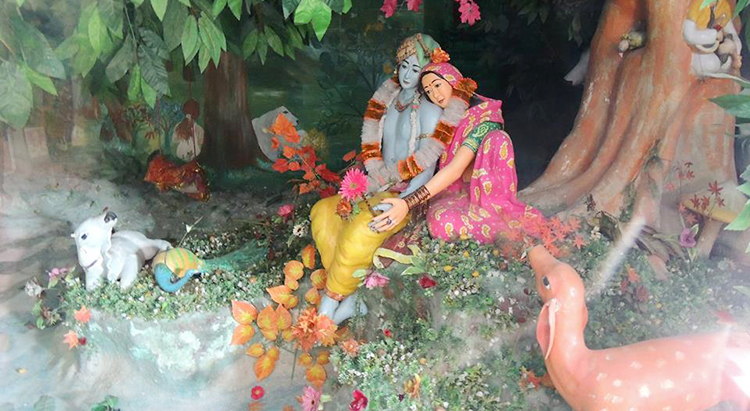
We reached the temple on two separate boats and found the Pandit waiting for us outside. His poise and civility were unmatched. The temple is humungous, containing quite a few rooms of different sizes. Towards one end of the temple, one of the larger rooms contains a colossal sculpture of Krishna and Radha, preserved inside a huge glass room. For about an hour, we kept wandering the temple while the Pandit explained to us the significance of every sculpture. It was saddening to realize how little we knew about Hinduism and the temples harboring the legacies of Hindu Gods. Towards the end, the Pandit made us sit on the temple stairs facing the river Indus, and read our palms. The entire experience was enthralling, and almost surreal in nature.
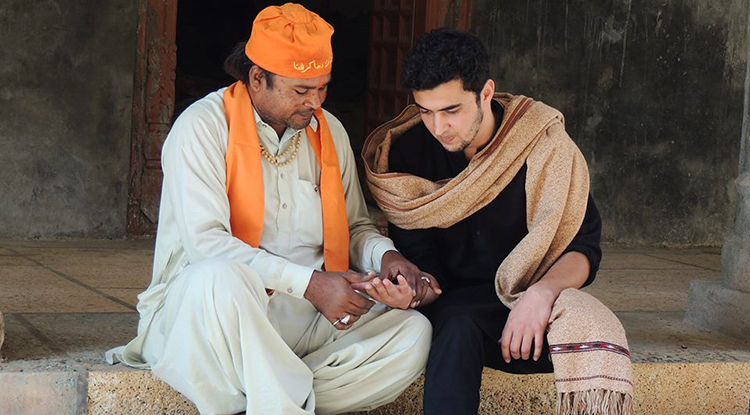
Located approximately half an hour away from the Sadh Belo Temple, Arore is home to one of the most well-regarded Kalka Devi temples. The temple contains a mountainous cave called the Kalka Devi Cave, now adorned with Kalka Devi’s sculptures, oil lamps and incenses all around. The temple is dedicated to the Hindu Goddess Kali. The cave with its low roof, ash grey caved walls and the strong, sweet smell of burnt incense, provides the perfect aura to sit, pray and reflect. When you exit the cave, there is a room on the other side that leads to the main hall where food is served three times a day. Most of us were quite hungry by this time, and began eating as soon as we came out. Not a single person objected to us being there or eating with the Hindus; we were thoroughly welcomed.
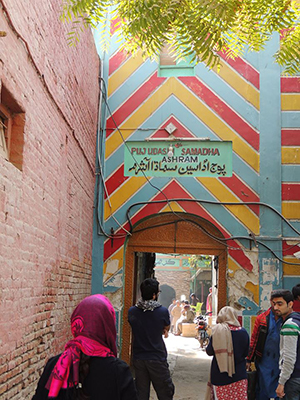
Located about 30 kilometers west of the right bank of the River Indus, Shikarpur is home to a number of temples and Hindu Samadhis. Puj Udasin Samadha Ashram near Shikarpur is famous for a palki that hangs in one of its room. It is said that this palki possesses a healing miracle. People come from faraway places to touch it and be healed. "We do not believe in discriminating against other religions. Everyone is welcome here to come and pray for as long as they want," told one of the caretakers.
The story doesn’t end here. Makli District in Thatta, on the way from Shikarpur to Karachi, is home not only to the largest necropolis in the world, but also harbors a number of Hindu temples that are known by very few people. Large verandas, rooms filled with large sculptures of Hindu Gods, an abundance of Prasad, and immensely hospitable people – the temple in Makli was more than worth the detour.
"The ghanta – the bell hanging at the entrance of the Hindu Temples – is rung thrice by devotees upon entering the temple. This is done to disengage one’s mind from ongoing thoughts, making it more open," told the caretaker at one of the Shikarpur temples.
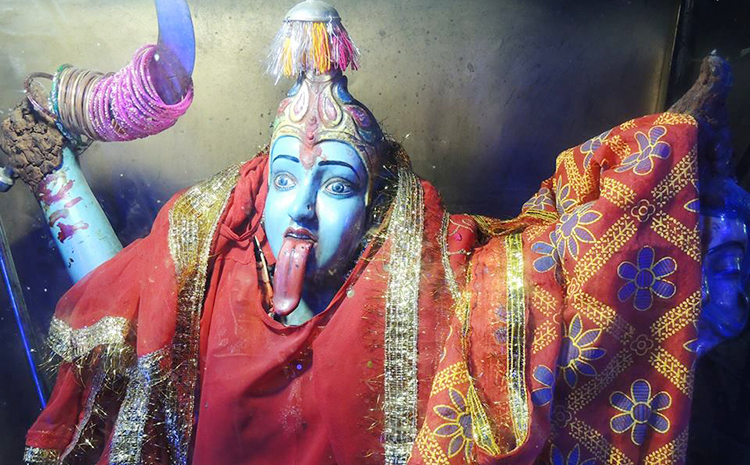
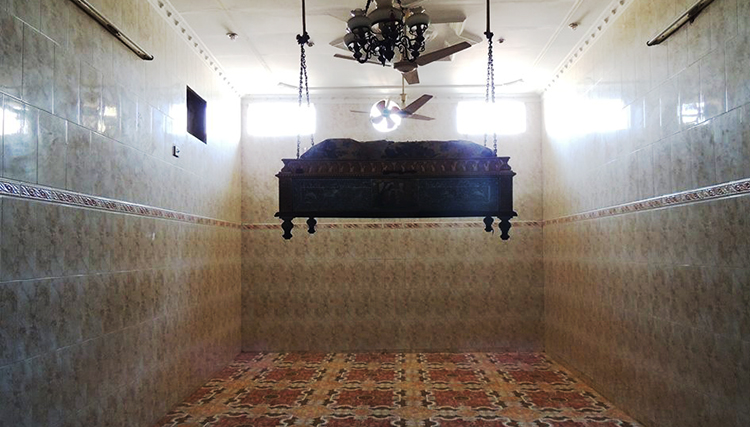
Our tour of a temple would normally end with the Pandit or caretaker presenting us with Prasad: traditional sweets served mostly at Hindu ceremonies. At a few of the temples, where the Prasad wasn’t ready, we were presented with biscuits or small packets of chips. Whatever the case, they would make sure that we never returned empty-handed.
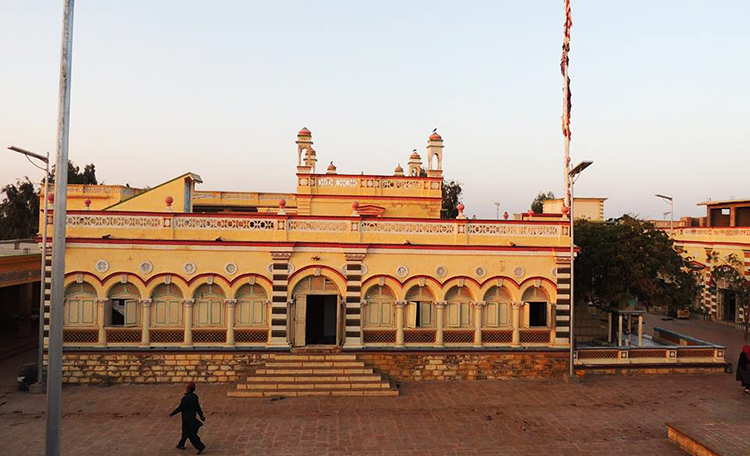
Moving on to the Jain Temples in Nagarparkar, a town in Tharparkar District of Sindh, it is frustrating and demoralizing to see that nothing is being done to preserve these structures. The temple near the Bodesar Dam, as well as the one located at the end of the Nagaparkar market, is worsening with every passing day, and the carvings of Hindu figures on the temple walls have been smudged to a large extent. The government resorts to ignoring the damages, as has been the norm. Nonetheless, if you are looking for a vacation and consider travelling south to be a waste of time, you need to think again about what you’re missing out on.
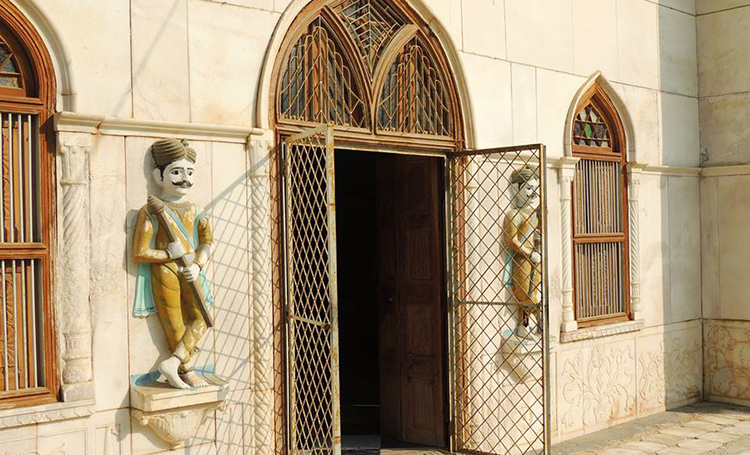
All images have been provided by Mehlab Jameel
You may also like: